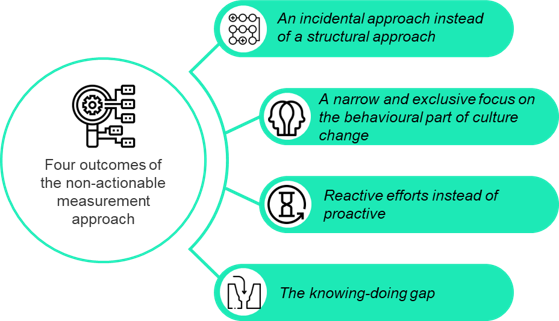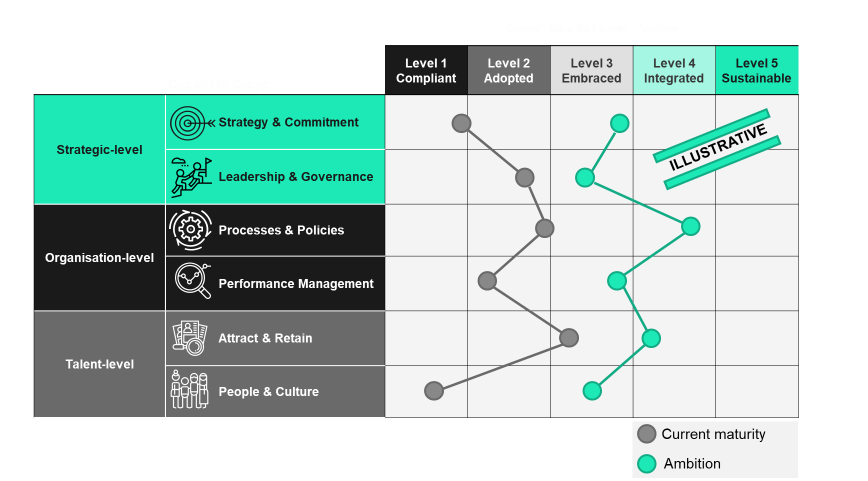Carbon Accounting Management Platform Benchmark…

The business case for Diversity, Equity and Inclusion (DEI) for organisations is quite clear. Organisations that invest in DEI outperform their competitors, understand their market better and are more creative and innovative. However, organisations struggle to create an impact with their efforts.
The business case for Diversity, Equity and Inclusion (DEI) for organisations is quite clear. Organisations that invest in DEI outperform their competitors, understand their market better and are more creative and innovative. With this business case in mind, organisations have measured their baseline status quo by means of surveys and HR statistics. They have started to allocate serious effort to DEI by setting up awareness initiatives such as unconscious bias trainings. However, several organisations still struggle with their DEI efforts due to how they measure. At Sia Partners, we have found that the incorrect measure approach results in four outcomes that impact the effectiveness of the DEI efforts of an organisation. Therefore, we have developed a diagnostic that ensures that the DEI efforts result in long-lasting change.
Multiple organisations measure employee perception and diversity statistics, indicating a need for change. Still, the data do not suggest how to do it, resulting in slow adoption and efforts that do not stick. An example applied to this is the use of an employee survey. First, different diversity dimensions (e.g., gender identity, culture) react to the statement: "I feel included". The outcome is that these groups do not feel included in the organisation. However, the survey does not provide what needs to change to create structural inclusion for these groups. Next, the diversity statistics indicate a low presence of diversity in the workforce, indicating a need to attract diverse talent. Nonetheless, the data do not offer what actions to take to attract talent and include them when not present. This is a non-actionable measurement approach.
Sia Partners has discovered that the non-actionable measurement approach results in four outcomes that impact the effectiveness of the DEI efforts of an organisation. We have summarised these below.

The above raises a couple of questions:
Over time, the DEI Maturity Diagnostic has been developed to support organisations in finding the correct answers and taking the right actions. Our diagnostic is divided into six categories, as can be seen below.

Each category consists of four to seven subcategories containing five maturity levels based on best practices. As seen in the illustrative example below, our diagnostic provides your organisation with quick insights into the current maturity and ambition gap.

Individually all subcategories contain a heatmap of where the organisation is leading and where the action is needed. The maturity levels provide a concrete description of what to implement to reach the desired state.
After completing the diagnostic, it provides a clear set of tangible deliverables for improvement. These deliverables include at least:
If you choose to perform the diagnostic organisation-wide, this also includes a breakdown of the results and deliverables per employee group, department, HR and leadership. With this option, you can identify the champions to drive change and champion the program and strategy.
Our approach consists of five easy steps. The steps are listed below:

Ready to make your DEI stick? Contact our experts for a first conversation, and let us support you in making your DEI initiatives actionable!